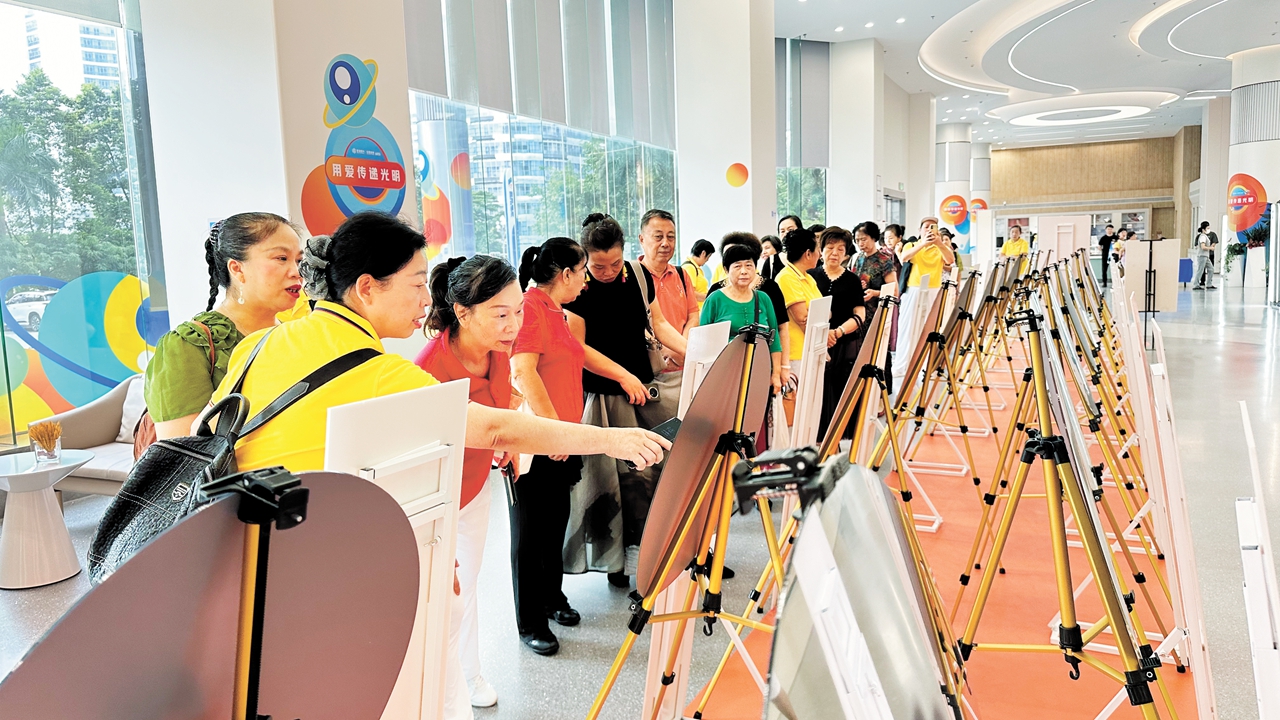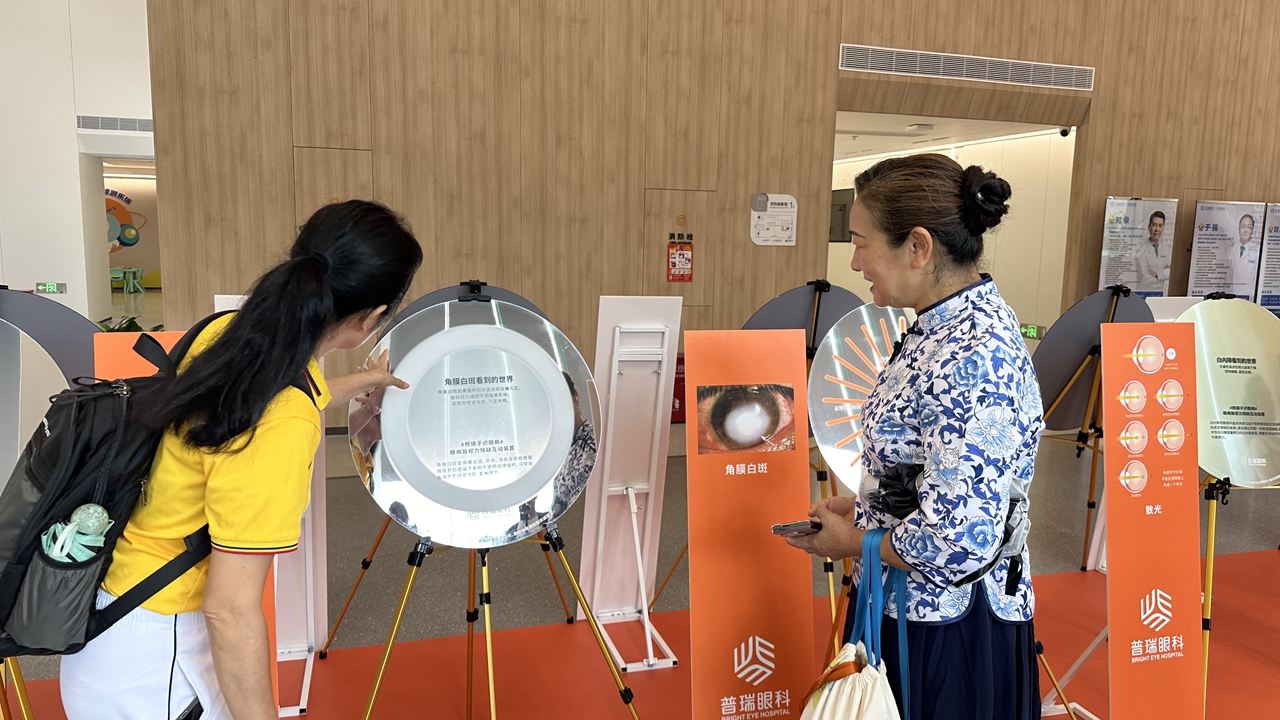Eye hospital hosts pop science exhibition
Writer: Debra Li | Editor: Lin Qiuying | From: Original | Updated: 2024-10-16
The lobby of the Shenzhen branch of Bright Eye (“Purui” in pinyin) Hospital, a private hospital chain listed on the ChiNext board, was turned into a mini exhibition hall yesterday, attracting more than 100 senior citizens from nearby communities.
Over 20 round mirrors were on display in the lobby. Their surfaces were covered by various shapes in distinct locations to mimic the impaired vision people experience as a result of various eye diseases. The pop science exhibition, aptly named “Look in the Mirror, Learn About Eye Diseases,” included posters beside each mirror with easy-to-understand information on disease symptoms, causes, and treatments.

Senior citizens attend a pop science exhibition at the Shenzhen branch of Bright Eye Hospital in Nanshan District yesterday morning. Photos by Li Dan
Liu Hongshan, a corneal disease specialist and the head of the hospital, said the exhibition was an effort to educate the public about common diseases like cataracts, glaucoma, and diabetic retinopathy.
With increased knowledge, people will know to seek treatment before a condition progresses to a more serious stage. “For example, those with a retinal tear can fix it with a quick laser procedure [that costs a] few hundred yuan if they seek help early,” explained Liu. Once a retinal tear develops into retinal detachment, treatment is more expensive and the outcome may be less effective, he added.

Liu Hongshan, head of the hospital, explains the symptoms of retinal tears.
Liu also shared that although aging is one of the causes, retinal tears are often related to having high myopia and a family history of retinal detachment or tears. “Young and middle-aged citizens also need to be aware of the danger and seek early treatment once they experience symptoms like suddenly seeing more black spots than usual or having a darkening or blurred vision, which are typical with retinal tears.”
The doctor noted that due to prolonged screen time resulting from widespread computer use in workplaces and the pervasive influence of social media in modern lifestyles, younger individuals are particularly susceptible to retinal tears.

Mirrors covered by various shapes mimic the impaired vision people experience as a result of various eye diseases.
Another disease that demands immediate treatment is retinal arterial obstruction. Triggered by other illnesses like hypertension, this eye disease is compared to a “heart attack” in the eye. “The best time frame to treat it is within six hours. Those who seek treatment after 24 hours are likely to lose their vision completely,” Liu cautioned.
According to Tan Xianglian, a diabetic retinopathy specialist at the hospital, about one third of all diabetic patients will develop this disease, which is caused by damage to the blood vessels of the light-sensitive retina. At first, diabetic retinopathy may cause no symptoms or only mild vision problems, but can lead to blindness.
Tan advises diabetic patients to keep their blood sugar levels under control, get a thorough eye check after their initial diagnosis, and get annual exams after the first five years and twice a year after 10 years.
Chen Bingheng, who specializes in the treatment of cataracts, says 60% of those above age 60 have the disease, and those above 80 are sure to have it. “Surgery is the most effective treatment for this disease,” he said, adding that a tailored intraocular lens (IOL) implant can not only return clear vision to the patient, but also solve other problems like myopia and presbyopia at the same time.
The exhibition, which will run into late November at the hospital in Nanshan District, will also tour 101 communities in eight subdistricts in Nanshan.